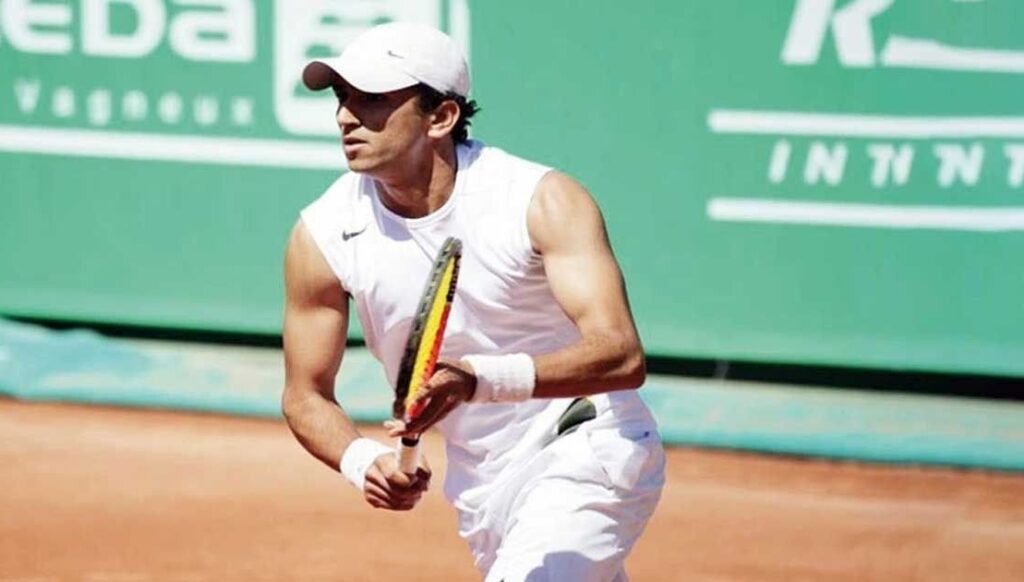
— Anindya Dutta
Last Friday, an International Tennis Integrity Agency (ITIA) press release sent tremors through the world of tennis, announcing a life ban on Moroccan tennis player Younes Rachidi found guilty of a staggering 135 counts of match fixing.
The news got three distinct kinds of responses from sports fans around the world. The first was a lot of ‘Et tu Brute’ kind of head shakes from a populace reconciled to corruption and cheating in sports. The second was utter disbelief that one person could be guilty of so many offences. The third, and perhaps the most damaging, was an immediate questioning of the integrity of players at the highest level.
Let us grab the bull by its thorns and begin with the third. With the prize money players receive at the highest levels of tennis, and the global scrutiny the matches are consistently under, fans can safely assume that is not where financial corruption in the sport resides. There is little upside for these players, and far too much to lose. The problem lies at lower levels of the sport.
The root causes reside within the sport’s ecosystem. The cost structure that has evolved over the years is grossly inflated, and the reward system seriously skewed. The end result is a huge financial conundrum for players.
‘Tennis is the highest risk venture you could invest in if you look at a young player as a startup’, Vijay Amritraj told me recently. This was no hyperbole. Indeed, Vijay is not a man who minces his words when a point is to be made.
Consider this. A top-50 player, to maintain their place in the rankings, will have annual expenses anywhere between $175,000- $500,000 (4 crores) and a top-100 player will need around $100,000 (80 lacs). It does not take much to deduce that for most players around the world these are numbers well beyond their financial means.
A back of the envelope calculation suggests that to break even financially, one needs to consistently be within the Top 200 in the world whether it’s men’s or women’s tennis. So to reach and survive at this level, one also needs to be good enough to win often and earn the money they must spend on coaches, physios, travel and other expenses. Go another hundred places down in the ranking ladder, and the equipment sponsors drop off adding yet another element to the cost.
To provide further context for Indian fans, across genders and formats (singles and doubles), there are currently only seven Indians who are in the Top 200 (all in doubles) – Rohan Bopanna, Sania Mirza, Ramkumar Ramanathan, Jeevan Nedunchezian, Yuki Bhambri, Saketh Myneni, and Ankita Raina. The rest struggle to find sponsors and the money to pay expenses, travel and attend tournaments.
It is also worth mentioning that prize money in doubles is a fraction of what it is in singles, and is naturally split in half among the players. The fact is that no one outside the Top 300 in either men’s or women’s tennis even covers their expenses.
Now think about this. There are over 1800 professional players ranked by the ATP and over 1100 by the WTA. It is safe to assume therefore that the financial struggles of these players (before we even get to the thousands of players who remain unranked), is a source of continual mental stress. Stress reduces resilience, impairs judgement, and takes us on paths we would not otherwise traverse.
And therein lies the crux of the corruption story of Younes Rachidi, the Moroccan puppet master (with a career high ranking of 473), and the two convicted Algerian players who were paid to dance to his directions – Mohamed Hassan and Houria Boukolda.
We won’t dwell on Rachidi who clearly decided his lifetime earning of US$ 34,000 from the sport he had given up other possible careers for, was not recompense enough. It needed to be supplemented by ill gotten gains from corrupting the sport. The two banned Algerians on the other hand present an interesting case study into what drives players to do what they do.
Mohammad Hassan, 27, whose highest ATP ranking was 1476, was found guilty of 29 offences from seven matches dating back to 2016 and 2018 when he was in his early 20’s and undoubtedly knew what he was doing. He needed money, and colluded with Rachidi to fix matches. He has now been banned for life.
The case of Houria Boukholda is more curious, and sad. This 20-year old young woman was found guilty of 15 offences from five matches she played at the Junior level in 2017 and 2018 when she was barely 15. In that period, some basic research showed me, she won 12 matches and lost 50 and her highest ranking was 884. Why, one may then ask, would anyone pay her money to lose matches?
I spoke to a few active players on the tennis circuit in order to understand what exactly happens at this level. This is the distressing story they had to relate.
Players who consistently rank so low, often end up playing at the ITF $15,000 tournaments at best. The singles winner at such events takes home $1500 and in doubles if one loses in the first round, $100 is your reward.
These tournaments are not held at fancy stadiums, and have a single supervisor who is expected to provide oversight. The fans who show up are asked not to stream matches live. But it’s impossible for the supervisor to monitor in the age of smartphones. A player described to me not just fans live streaming matches from behind trees surrounding the court, but fans and players doing so from the courtside.
The result is rampant spot fixing. Bets are placed on double faults, points going to a particular player at specific moments of the match, ensuring pre-agreed set scores, and so on. Players who find themselves unable to progress beyond this level, having already given up on school and college to pursue their dream, get lured into making small but easy money that pays for them to stay on the circuit.
Players also told me about the ‘open secret’ of matches being regularly and deliberately ‘thrown’ by relatively higher ranked ITF level players who are at the cusp of entering either the ATP or WTA circuit. Some of these players are ranked even within the top 200 in the world. Multiple sources point to a group of Russian women players who are at the forefront of this.
Whether the reason is directly related to bookies paying for such results, or simply the player herself choosing to lose because of a schedule clash thus enabling her to fly to a more financially lucrative tournament, is impossible to ascertain. What is certain is that this saga is far from over.
Corruption and match fixing is rampant and often going unchecked in the lower rungs of Tennis. The disease is deep rooted and Rachidi’s conviction is just the tip of the iceberg. Who will sink in the Titanic that collides with it someday, is the question.
Anindya Dutta is the author of Advantage India: The Story of a Indian Tennis and Wizards: The Story of Indian Spin Bowling.





